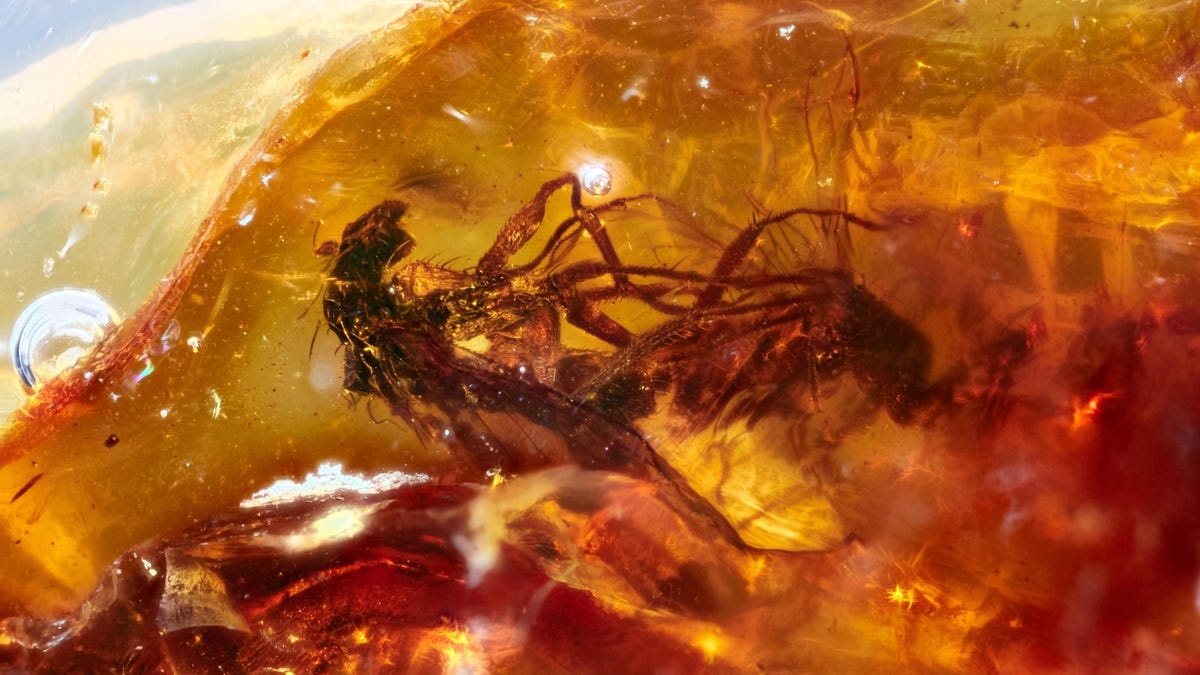Flies having sex preserved in fossil dating back millions of years
The fossil of the long-legged flies with their proverbial pants around their ankles is now one of Australia's oldest on record.

A 41 million-year-old tryst
Though some couples boldly declare themselves to be so good at fornication they ought to be immortalized for it, they've been beaten to the punch by two long-legged flies preserved in amber.
A new study, published in the journal Nature on Thursday, suggests the flies are evidence of some of the oldest known Australian fossils to be preserved in amber. They're also potential candidates for the first frozen mating behavior to be listed in Australia's fossil record.
Led by a team from Monash University's School of Earth, Atmosphere and Environment in Melbourne, the study unearthed more than just some randy flies. Researchers also discovered the oldest known fossil ants from southern Gondwana, the first Australian fossils of wingless hexapods -- known as "slender springtails" -- a cluster of spiders, two liverwort, two moss species and biting midges, all encased in amber.
A biting midge, not up to any salacious behavior.
"Amber is considered to be a 'holy grail' in the discipline, as organisms are preserved in a state of suspended animation in perfect 3D space, looking just like they died yesterday," said Jeffrey Stilwell, a paleontologist at Monash University and the study's lead author, in a press release. "But in fact [they] are many millions of years old, providing us with an enormous amount of information on ancient terrestrial ecosystems."
The team -- made up of scientists from Australia, Spain, Italy and the UK -- studied amber pieces found in Tasmania's Macquarie Harbour Formation and Victoria's Anglesea Coal Measures, dating back over 50 million and 40 million years respectively.
"The research furthers our understanding of prehistoric southern ecosystems in Australia and New Zealand during the Late Triassic to mid-Paleogene periods (230–40 million years ago)," said Stilwell.
Sure we can all giggle about these long-legged flies getting caught with their long legs in a compromising position, but it's actually a huge step forward in learning more about Australia's prehistoric beasties and extrapolating what it might mean now.
"Our findings provide exciting new insights into the origin, antiquity and evolution of the modern Australian biota and show that there may be a vast potential for future, similar finds in Australia and New Zealand," said Stilwell.

